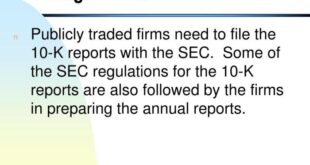Art lawyer providing art authentication and banking lawyer advising on financial regulations? These legal professionals play crucial roles in ensuring the integrity and compliance within the art and financial industries. Art lawyers specialize in authenticating artworks, while banking lawyers guide clients through the complexities of financial regulations.
Together, they contribute to the smooth functioning of these sectors.
This article delves into the distinct roles of art lawyers and banking lawyers, exploring the legal issues they handle and the ethical considerations they face. We’ll also examine how their knowledge and skills can be applied across both fields, providing valuable insights for professionals and enthusiasts alike.
Art Law: Art Lawyer Providing Art Authentication And Banking Lawyer Advising On Financial Regulations

Art law encompasses various legal aspects related to the art world, including authentication and appraisal. Art lawyers play a crucial role in determining the authenticity of artworks, which has significant implications for their value and legal ownership.
Authentication
Art authentication involves verifying the authenticity of an artwork, ensuring it is genuine and not a forgery or imitation. Art lawyers employ various methods to authenticate artworks, including:
- Examining the artwork’s physical characteristics, such as its materials, techniques, and style, to compare them with known works by the artist.
- Analyzing the artwork’s provenance, or ownership history, to trace its origin and ensure its authenticity.
- Consulting with experts in art history, conservation, and scientific analysis to provide additional insights and opinions.
Legal Implications
Providing a false or misleading authentication can have serious legal consequences. If an artwork is later found to be fake, the buyer may have legal recourse against the authenticator for misrepresentation or fraud. In some cases, criminal charges may also be brought.
Banking Law: Financial Regulations
The financial industry is subject to a complex web of regulations designed to protect consumers, ensure the stability of the financial system, and prevent financial crime. Banking lawyers play a vital role in advising clients on compliance with these regulations.
Financial regulations cover a wide range of topics, including:
- Capital requirements: Banks are required to maintain a certain level of capital to ensure they can absorb losses and continue to operate in the event of a financial crisis.
- Liquidity requirements: Banks must have sufficient liquid assets on hand to meet their obligations to depositors and other creditors.
- Risk management: Banks are required to have robust risk management systems in place to identify, assess, and manage the risks they face.
- Anti-money laundering and counter-terrorism financing regulations: Banks are required to implement anti-money laundering and counter-terrorism financing programs to prevent their services from being used for illegal purposes.
Banking lawyers help clients understand and comply with these regulations by:
- Providing legal advice on the interpretation of financial regulations.
- Developing and implementing compliance programs.
- Conducting internal investigations.
- Representing clients in enforcement actions.
The consequences of violating financial regulations can be severe, including:
- Fines
- Loss of license
- Criminal prosecution
Banking lawyers play a critical role in helping banks comply with financial regulations and avoid these consequences.
Comparative Analysis of Art Law and Banking Law
![]()
Art law and banking law are two distinct legal fields that share some similarities and differences. Art lawyers specialize in legal issues related to the art world, including the sale, purchase, and collection of art. Banking lawyers specialize in legal issues related to the banking industry, including lending, investment, and compliance with financial regulations.Both
art lawyers and banking lawyers must have a strong understanding of the law and be able to apply it to complex legal issues. They must also be able to communicate effectively with clients and other professionals. However, there are some key differences between the two fields.One
of the most significant differences between art law and banking law is the subject matter. Art lawyers deal with legal issues related to art, while banking lawyers deal with legal issues related to banking. This difference in subject matter leads to some differences in the legal issues that they handle.For
example, art lawyers may be involved in disputes over the ownership of art, the authenticity of art, and the value of art. Banking lawyers may be involved in disputes over loans, investments, and compliance with financial regulations.Despite these differences, there are also some similarities between art law and banking law.
Both fields require lawyers to have a strong understanding of the law and be able to apply it to complex legal issues. Both fields also require lawyers to be able to communicate effectively with clients and other professionals.In addition, the knowledge and skills of an art lawyer can be applied to banking law, and vice versa.
For example, an art lawyer’s knowledge of the art market can be helpful in advising banks on lending to art collectors. Similarly, a banking lawyer’s knowledge of financial regulations can be helpful in advising art collectors on how to comply with the law.
Ethical Considerations in Art Law and Banking Law
Art lawyers and banking lawyers encounter unique ethical dilemmas due to the sensitive nature of their work. Maintaining confidentiality, avoiding conflicts of interest, and resolving ethical issues ethically and professionally are paramount.
Confidentiality
Both art lawyers and banking lawyers are entrusted with highly confidential information. Art lawyers must safeguard the privacy of their clients’ collections and transactions. Banking lawyers must protect sensitive financial data and comply with anti-money laundering regulations.
Conflicts of Interest
Conflicts of interest can arise when a lawyer represents multiple parties with opposing interests. Art lawyers must avoid representing both the buyer and seller in an art transaction. Banking lawyers must ensure that they do not have any personal or financial interest in the transactions they advise on.
Resolving Ethical Dilemmas
When faced with ethical dilemmas, art and banking lawyers should consult with colleagues, seek guidance from professional organizations, and consider the following principles:
- Act in the best interests of their clients
- Maintain confidentiality
- Avoid conflicts of interest
- Be honest and transparent
- Follow applicable laws and regulations
Case Studies
Case studies provide valuable insights into the practical application of art law and banking law. They illustrate the legal issues that arise in real-world situations and the strategies used by lawyers to resolve them.
The following case studies highlight the intersection of art law and banking law and the challenges faced by lawyers in these fields.
Case Study 1: The Sale of a Forged Painting, Art lawyer providing art authentication and banking lawyer advising on financial regulations
In this case, a collector purchased a painting that was later discovered to be a forgery. The collector filed a lawsuit against the gallery that sold him the painting, alleging fraud and breach of contract. The gallery claimed that it had relied on the authenticity certificate provided by the artist’s estate.
The court found that the gallery had not exercised due diligence in verifying the authenticity of the painting and was therefore liable to the collector.
This case highlights the importance of due diligence in art transactions. Lawyers representing buyers and sellers of art should carefully review all documentation and consult with experts to ensure the authenticity of the artwork.
Case Study 2: The Financing of an Art Collection
In this case, a collector sought to finance his art collection through a loan from a bank. The bank required the collector to provide collateral for the loan, which included several valuable paintings. The collector pledged the paintings to the bank, but he failed to make the loan payments.
The bank foreclosed on the loan and sold the paintings to satisfy the debt.
This case illustrates the legal issues that arise when art is used as collateral for a loan. Lawyers representing lenders and borrowers should carefully consider the terms of the loan agreement and the risks involved in using art as collateral.
Case Study 3: The Tax Implications of Art Transactions
In this case, an artist sold a painting to a collector for a substantial sum of money. The artist failed to report the sale on his tax return, and the IRS audited him. The IRS determined that the artist owed significant taxes on the sale of the painting.
The artist argued that the sale was a gift, not a sale, but the IRS did not agree.
This case highlights the tax implications of art transactions. Lawyers representing artists and collectors should be aware of the tax laws that apply to the sale, purchase, and donation of art.
Closure

In conclusion, art lawyers and banking lawyers are indispensable players in their respective domains. Their expertise safeguards the authenticity of artworks, ensures compliance with financial regulations, and promotes ethical practices. As the art and financial landscapes continue to evolve, the roles of these legal professionals will only become more critical in shaping the future of these industries.
FAQ Explained
What is the primary responsibility of an art lawyer?
Art lawyers specialize in authenticating artworks, determining their authenticity and provenance. They also advise clients on art-related legal matters, such as contracts, intellectual property, and estate planning.
How do banking lawyers contribute to the financial industry?
Banking lawyers provide guidance to banks and other financial institutions on compliance with financial regulations. They help clients navigate complex legal frameworks, mitigate risks, and ensure adherence to ethical standards.
Can the knowledge and skills of art lawyers be applied to banking law?
Yes, art lawyers’ expertise in authentication and provenance research can be valuable in banking law, particularly in areas such as due diligence and anti-money laundering compliance.
 Nenroll Nenroll News
Nenroll Nenroll News













